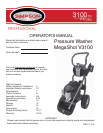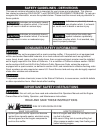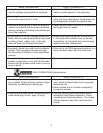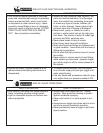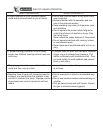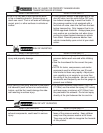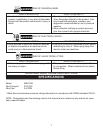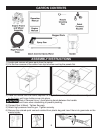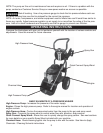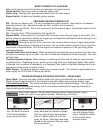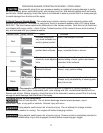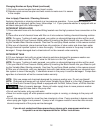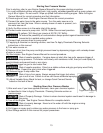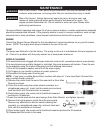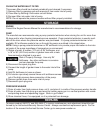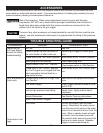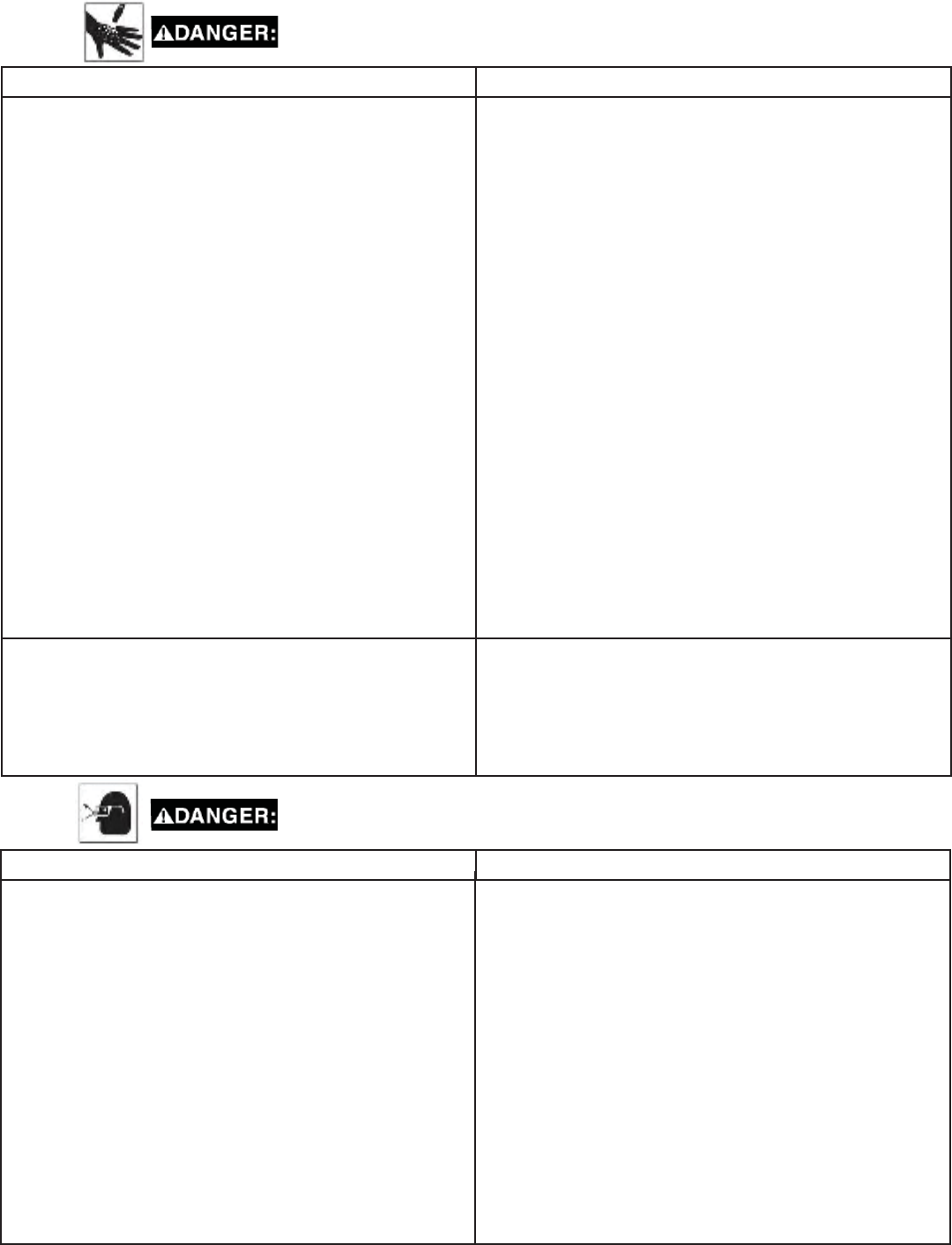
RISK OF FLUID INJECTION AND LACERATION
WHAT CAN HAPPEN
HOW TO PREVENT IT
Your pressure washer operates at fl uid pres-
sures and velocities high enough to penetrate
human and animal fl esh, which could result
in amputation or other serious injury. Leaks
caused by loose fi ttings or worn or damaged
hoses can result in injection injuries. DO NOT
TREAT FLUID INJECTION AS A SIMPLE
CUT! See a physician immediately.
Inspect the high-pressure hose regularly. Re-
place the hose immediately if it is damaged,
worn, has melted from contacting the engine,
or shows any signs of cracks, bubbles, pin-
holes, or other leakage. Never grasp a high-
pressure hose that is leaking or damaged.
Never touch, grasp, or attempt to cover a
pinhole or similar water leak on the high pres-
sure hose. The stream of water IS under high
pressure and WILL penetrate skin.
Never place hands in front of nozzle.
Direct spray away from self and others.
Make sure hose and fi ttings are tightened and
in good condition. Never hold onto the hose or
fi ttings during operation.
Do not allow the high pressure hose to contact
the muffl er.
Never attach or remove wand or hose fi ttings
while system is pressurized - squeeze trigger
gun (when engine is off) to relieve pressure in
the system.
•
•
•
Injuries can result if system pressure is not
reduced before attempting maintenance or
disassembly.
To relieve system pressure, shut off engine,
turn off water supply and pull gun trigger until
water stops fl owing.
Use only hoses and accessories rated for pres-
sure higher than your pressure washer’s PSI.
•
•
•
•
•
•
•
•
RISK OF INJURY FROM SPRAY
WHAT CAN HAPPEN
HOW TO PREVENT IT
High velocity fl uid spray can cause objects to
break, propelling particles at high speed.
Light or unsecured objects can become haz-
ardous projectiles.
Always wear ANSI-approved Z87.1 safety
glasses. Wear protective clothing to protect
against accidental spraying.
Never point wand at, or spray people or ani-
mals.
Always secure trigger lock when wand is not in
service to prevent accidental operation.
Never permanently secure trigger in pull-back
(open) position.
•
•
•
•
•
•
4



